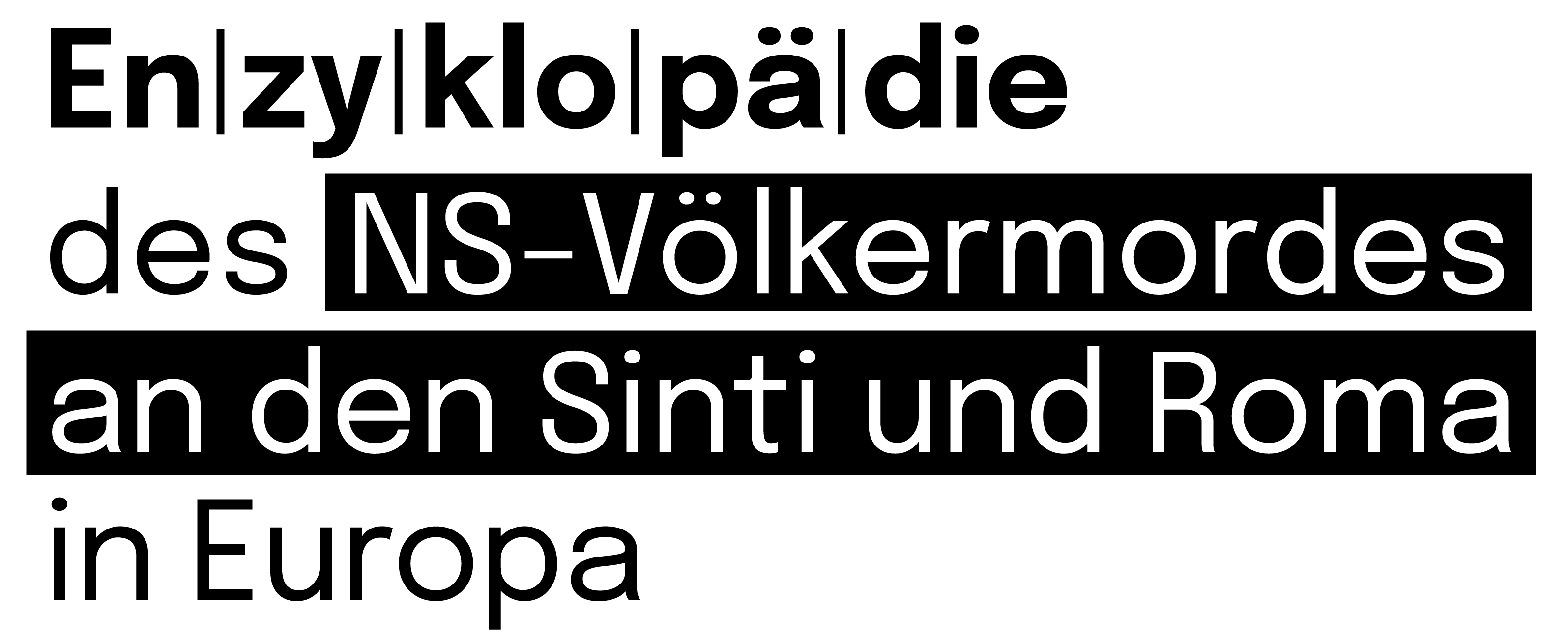The journalist and educator Stanisław ‘Stahiro’ Stankiewicz has made a name for himself since the 1980s as an author, publisher and politically committed Roma and has achieved a high level of international recognition. His family history is closely linked to the crimes committed against Roma under German occupation. He himself was born on 3 June 1943 in Dominów, where his mother was deployed on a work detail from Majdanek concentration camp in German-occupied Poland.1Unless otherwise stated, the information is based on documents in Stanisław Stankiewicz’s private archive and on personal communications from Stankiewicz to the author.
Persecution of the Family
His mother Kamila ‘Kamcia’ Malewicz (1923–2019) was born in Zdzięcioł, also known as Dzięcioł and Dziatłowo, then in Poland, now Dzyatlava in Belarus. Her family was large and owned several houses in the small town, where Jewish families made up 75 per cent of the population. In 1926, 3,450 of the 4,600 inhabitants were Jewish. At the time of the Wehrmacht invasion of the Soviet Union in June 1941, the number of Jews was around 4,500 due to numerous refugees.2See ‘Dyatlovo’, International Jewish Cemetery Project: https://iajgscemetery.org/eastern-europe/belarus/dyatlovo [accessed: 04/04/2024].
The Roma in Dzięcioł were almost completely wiped out along with the Jewish population.3On the murder of the Jewish population, especially in April and August 1942, see “Zdzięcioł/Żetl”, in Miron, The Yad Vashem Encyclopaedia of Ghettos, 974–975. Apart from Kamcia, who was already living with her husband at the time of the genocide, and one of her sisters, who hid in the forest with her husband and four children together with other Roma, the whole Malewicz family was murdered—of 108 relatives, only eight survived the war.
Joza Stankiewicz (1920–1994), Stahiro’s father, came from one of the families who travelled with horses, wagons and tents. The kind of camp that they formed at their stopping places was called a ‘tabor’. Joza Stankiewicz was born in such a tabor; the location is unknown. He had a brother who was murdered by the Germans and four sisters who survived. Of his father’s family, which numbered 42 at the time, only twelve survived.
Hiding and Arrest
After marrying shortly before the start of the Second World War, Kamcia Stankiewicz moved to her husband’s tabor in the Lublin region, which was occupied by German troops in mid-September 1939. The Lublin district, part of the General Government under German occupation, became a centre for deportations and murders of the Jewish population. Lublin was the seat of the district’s SS and police chief, Odilo Globocnik (1904–1945), who was later in charge of the Belzec, Sobibor and Treblinka extermination camps as head of ‘Aktion Reinhardt’ (Operation Reinhardt). At the end of March 1941, 34,000 Jews were crammed into a ghetto in Lublin; from October 1941, the Majdanek concentration camp was established on the south-eastern outskirts of Lublin.
Roma, too, were in mortal danger in the General Government. The Stankiewicz family had to hide in the forest and manage without a fire even during the day for fear that the smoke would give away their hiding place. They and the other members of the tabor who had also managed to escape into the forest narrowly escaped arrest once; Joza Stankiewicz was wounded during a German attack on their camp. The couple’s first child, a girl named Krystyna, was born in 1941. In the summer of 1942, the families were betrayed, and they were all arrested and deported to the Lublin ghetto. From there they were sent to the Majdanek concentration camp.
Dominów
Joza Stankiewicz, his wife and daughter, two of his sisters, their husbands and their three children were often sent from the camp to Dominów, six kilometres south of Lublin, for forced labour. The property there belonged to a Polish landowner who had fled in fear of the Germans. The German occupiers used the estate to grow vegetables for the troops and for fish farming. At the beginning of the forced labour deployment, the families were transported back to Majdanek every day until the German administrator asked the Schutzstaffel (SS) to leave the Roma in Dominów for reasons of efficiency. Stahiro Stankiewicz was born on this estate.
SS men are said to have come to the estate twice to take the Roma back to the camp, and twice the German administrator of the estate was able to save the families. Joza Stankiewicz later told his son that the administrator explained to the SS men that the Roma worked very hard and well and were therefore productive for the German troops. The family survived there until the liberation by the Red Army in July 1944.
After the Liberation
The family was initially able to continue making a living as before the war: they travelled with a tent and wagon to trade horses. Three more children, a boy and two girls, were born. In 1964, the Stankiewiczes had to settle in Białystok and give up their wagons, as a new law against travelling Roma had been introduced in Poland.4See Krasnowolski, Cyganie/Romowie w Polsce i w Europie, 12. They were allowed to keep the horses, as Joza Stankiewicz was able to obtain a horse breeding licence.
Stahiro Stankiewicz went to school, completing his secondary school studies, and in 1973 he graduated from the University of Warsaw with a master’s degree in journalism and education. He started a family and now has two children and six grandchildren.
Political Activities and Publications
Stahiro Stankiewicz has been involved in civil society since the 1980s. He was on the board of the International Romani Union (IRU) from 1986. Twice Vice President of the IRU (elected in 1990 and 2000), he eventually became its President (from 2004 to 2012) and was subsequently President of the IRU Parliament (2012-2014). He has been a member of the Swiss-based Rroma Foundation since 1993. Between 2001 and 2004, he was also active in the European Union as a member of an exploratory group in Strasbourg on the topic of Roma and was involved in the founding of the European Roma and Travellers Forum (ERTF). He was then Vice-President of the ERTF from 2004 to 2012. Since 2012, he has been President of the Council of Polish Roma, which is based in Białystok.
‘Rrom p’o Drom’ [Roma on the Way], a monthly journal about the culture, language, history and present of the Roma, which was published from 1990 to 2012, was edited by Stahiro Stankiewicz in Białystok.5See “Rrom po Drom”, Katalog Czasopism Kulturalnych: http://katalog.czasopism.pl/index.php/RROM_PO_DROM [accessed: 14/06/2024]. He has also authored or edited several books and compiled a large collection on the persecution and murder of Roma, particularly in German-occupied Poland.
He was and is also active in remembrance politics, for example from 2001 to 2012 as a member of the International Council of the Auschwitz-Birkenau State Museum [Międzynarodowa Rada Oświęcimska] and on the advisory board of the Treblinka Museum. An important concern for him is the debate surrounding the term used to describe the genocide of the Sinti and Roma in Europe. In line with the resolutions of the IRU, he is in favour of the use of the term ‘Samudaripe Roma’.




